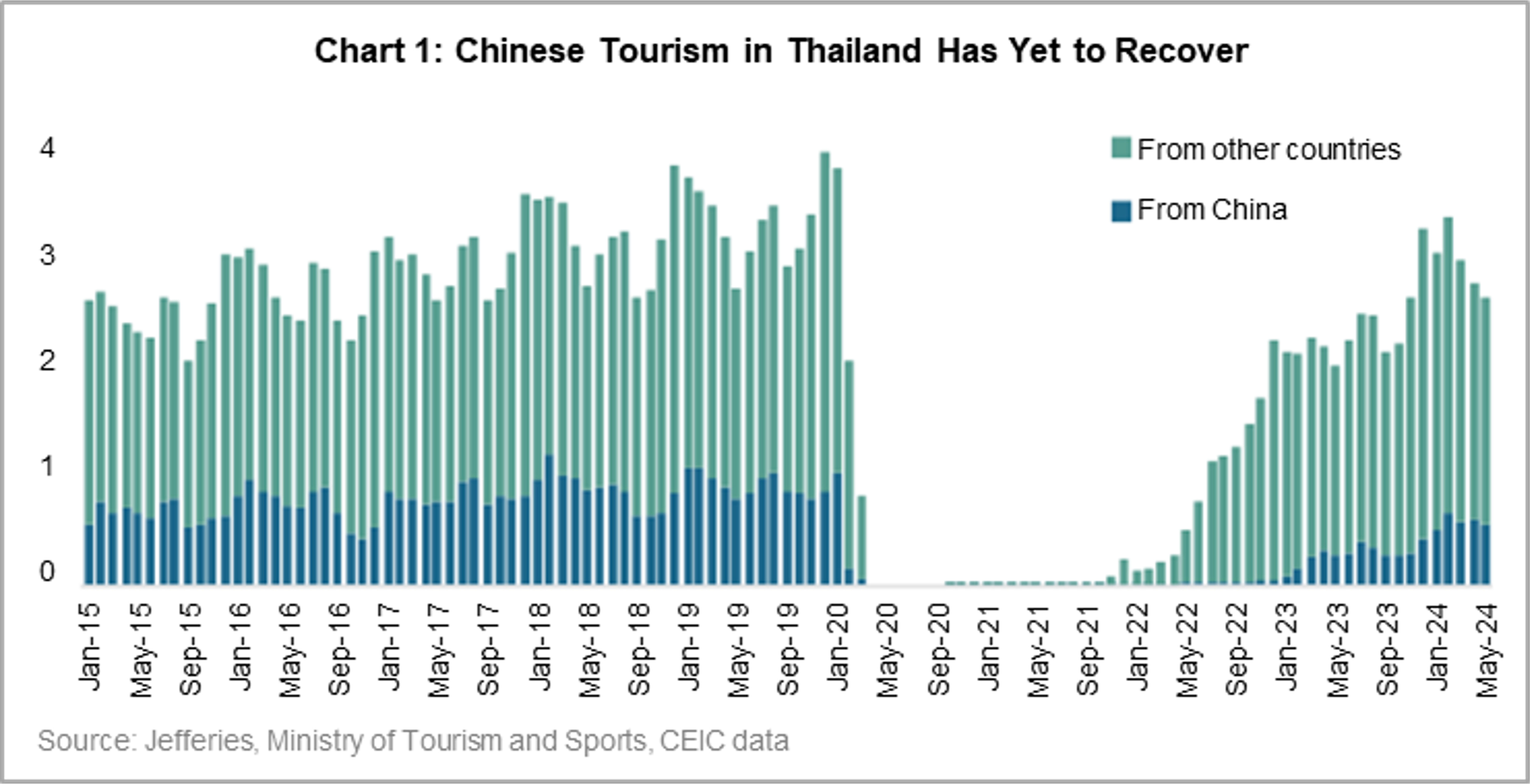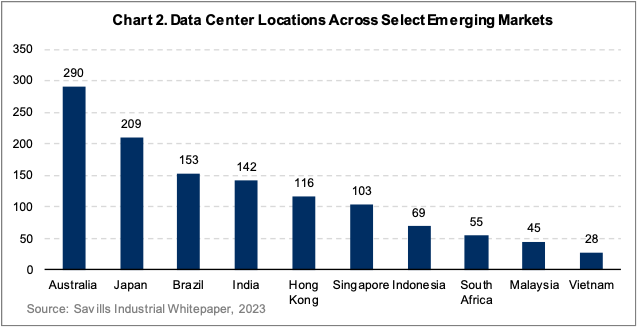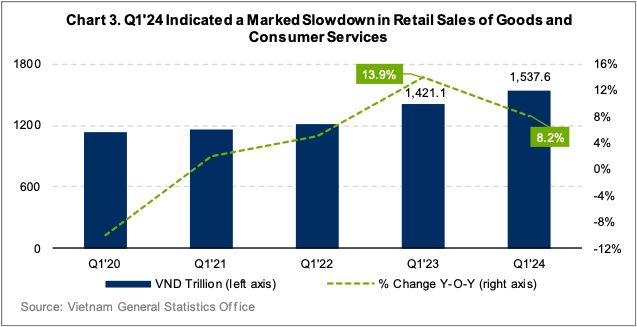Earlier this year, I spent two weeks in Southeast Asia to assess investment opportunities, test our investment theses, and deepen our local network across the region. The trip began in Hong Kong, where I met with over 20 companies across five days at one of the largest regional investor conferences. I then traveled to Vietnam and Thailand to tour factories that have absorbed relocated capacity related to the ‘China plus one’ strategy. While in Vietnam, I also spent time with several Vietnamese corporations to assess our investment theses across industries. I came away excited about Vietnam and with cautious optimism about opportunities in China. Meanwhile, some questions remain regarding Thailand’s future.
Hong Kong – Where Is Everyone?
Compared to my last visit in 2019, the mood on the ground in Hong Kong felt subdued. Roads, restaurants, and shops were less busy. With a pegged Hong Kong dollar and declining Chinese renminbi, consumers seem to prefer shopping across the border in mainland China. However, the management teams I met were generally optimistic. Largely, they believe it will take time for consumer activity to recover but observe that some of the recent stimulus measures are starting to work.
As part of the Hong Kong leg, I toured a new development at the site of the old Kai Tak Airport, which is owned by China Overseas Land (COLI), one of our holdings in the Emerging Markets Opportunities strategy. COLI is a leading SOE property developer in China focused on premium markets in Tier 1 & 2 cities. Despite the high prices, the building I toured was over 90% sold and over 80% occupied. More than half of the buyers are from mainland China. With a strong balance sheet, COLI is well positioned to gain market share in the current downturn. However, this example is not necessarily a good read-across – not all developers are having the same level of success. Another site I visited had just 10% of its units sold despite being built two years ago.
General weakness in the property market was certainly evident and just one piece of the larger economic growth puzzle. We remain cautiously optimistic about China overall but believe patience will be required, as the rebound will take time. As management teams continue to deliver on greater cash flow generation and return of capital, we can afford to be patient.

Thailand – Work To Be Done
Economic activity in and around Bangkok was stronger than what I saw in Hong Kong. Tourism is an important driver of the Thai economy (at about 20% of GDP, direct and indirect) and is still recovering to pre-pandemic levels. I noticed tourists from India, the Middle East, and Europe, but the Chinese tourist presence was relatively subdued despite recently implemented visa waivers (Chart 1).

According to CEIC, FDI was less than 1% of Thai GDP in 2023 (versus 4.3% in Vietnam). Thai FDI growth is largely limited to the auto sector; beyond that, FDI opportunities appear constrained, and internal consumption remains the main economic driver. However, political turmoil continues to hinder Thailand’s economic progress. A recent change in government has suspended a consumer stimulus package that could have aided economic growth.

One objective of my visit was to assess Thailand’s ability to attract manufacturing capacity as an alternative to China¹ . The Thai government set up the Eastern Economic Corridor, a special economic zone designed to encourage FDI (Figure 1). One of my stops was an industrial park in Rayong, located within the EEC and a few hours’ drive from Bangkok. Industrial real estate company WHA Corp owns the park, which houses the largest auto cluster in the country. It is an impressive site that opened 30 years ago with General Motors as its first customer. The relocation of Chinese manufacturing capacity was evident. Chinese customers now comprise 19% of revenue at this park, up from 5% five years ago. This growth has been driven by supply chain shifts (auto) and consumerrelated manufacturing (electronics, furniture, appliances). The bulk of WHA’s Chinese customers are SMEs that have followed their larger customers’ capacity into Thailand.

While on the ground, we were also keen to gain a deeper understanding of the role Thailand is playing in the region’s digital infrastructure buildout, given our investment in Advanced Information Services (AIS). AIS, the largest domestic telecommunications company, owns about 20% of Thailand’s data center capacity.
One of the broad concerns in Thailand is an overbuild of data centers as the country tries to attract regional customers amid weak domestic corporate sentiment. We do not believe data centers will be major drivers of Thai economic growth or FDI, but several other ASEAN countries have invested in data center buildouts, and Thailand, sensing it is behind the curve (Chart 2), has been playing catch-up. The country has about 30 data centers² already, and Microsoft, Google, and Amazon are all planning to build more.

I visited a hyper-secure (think: armed guards) Tier 4 data center (DC Supernap) located close to one of the subsea landing stations. Supernap claims to be the only ASEAN DC that guarantees 100% uptime, but the facility appeared underutilized and mismatched vis-a-vis current customer needs, as most customers currently do not require data centers with such high technical specifications.
By contrast, AIS’ expansion efforts are more measured, building capacity prudently and primarily for internal use. Its first hyper-scale data center for external customers will go live next year. Additionally, AIS is benefitting from inmarket consolidation with now just two national telecom operators. A tourism and consumption recovery can further boost wireless service revenue growth at AIS. Results for the first half of the year have beaten market expectations and we expect the recent momentum to be sustainable.
Vietnam – Wow!
This was my first trip to Vietnam – and, wow, what a great experience. I spent four days in Ho Chi Minh City and Hanoi, and the energy on the ground was meaningfully higher than in Thailand or Hong Kong. While macroeconomists and company management teams complain about weak consumer sentiment (Chart 3), I observed busy streets, full restaurants, and a vibrant bar scene. Residents and tourists alike appeared to be comfortably spending money.

Vietnam has some of the best consumer demographics in the ASEAN region – a young population with a median age of 31.5³ and the highest working percentage of the population in the region4. Our conversations with consumer companies – including leading dairy brand Vina Milk (an attractive holding in our emerging markets portfolio due to its market share gains and tailwinds linked to consumer premiumization) and integrated consumer goods conglomerate Masan Group – reinforced my anecdotal observations and indicated that consumption trends were improving through the second quarter.
In conjunction with strong internal consumption dynamics, Vietnam’s attractiveness as an FDI destination is well documented (Chart 4). After a nice boost in 2023, year-over-year5 FDI growth has been about 9%. The government’s anticorruption campaign has – so far – had limited impact on industrial development.

Two other areas of interest in Vietnam are infrastructure and real estate – and I left with a fair degree of confidence in both. In one of my meetings, ports operator Gemadept expressed that container demand has improved enough this year to justify raising prices by 15%. The main drivers of their business are imports from China (particularly in the north) and exports to the US. I also met with our holding Hoa Phat Group (HPG), the largest steel producer in Vietnam. HPG’s low-cost structure, leading market share, and new capacity coming online at year-end position the company to benefit from robust steel demand growth driven by increased infrastructure investment and a recovery in residential construction activity.
My conversation with CBRE revealed that growth in the Vietnamese real estate sector has been affected more by a lack of supply than weak demand. New projects have stalled due to permitting issues and limited visibility into regulations linked to the ongoing anti-corruption campaign.
I also toured two of the mega Vinhomes projects in Hanoi. Vinhomes is Vietnam’s largest real estate developer, and the projects are mini-cities complete with schools (public and private), shopping malls, entertainment complexes, and even a beach! Vinhomes has built office space within the developments to help lower commute times and improve quality of life. Each development has units at every price point, thereby creating inclusive communities in line with national social initiatives. As one of our core holdings, Vinhomes is very well-positioned to capitalize on increased demand in Vietnamese housing amid structural urbanization. As supply restrictions ease and consumer sentiment improves, we expect shares to re-rate higher from historically cheap levels.


After a few days in Vietnam, I cannot help but remain excited about the long-term prospects for the country. The trip reinforced our investment thesis and the economic growth drivers became self-evident: a) strong FDI supported by the ‘China plus one’ strategy, b) favorable consumer demographics, and c) growing tourism, which has already surpassed pre-pandemic levels. On the last point, I believe Vietnam has great potential to rival Thailand as a tourist destination over the next few years. I certainly plan to return as a tourist!
Closing Remarks
As a whole, the ASEAN region remains an attractive investment destination driven by desirable consumer demographics and an increasingly sophisticated manufacturing base that is supportive of FDI. Of the three countries I visited on this trip, Vietnam’s long-term economic growth drivers are most apparent, reinforcing our views about this exciting frontier market. Meanwhile, investment opportunities in Thailand appear scarce. With modest FDI prospects, growth will need to come from tourism and the consumer, both of which could be challenged over the mid-term. We continue to find compelling investment opportunities with attractive risk/reward profiles throughout the region and look forward to our next trip – both for business and pleasure!


